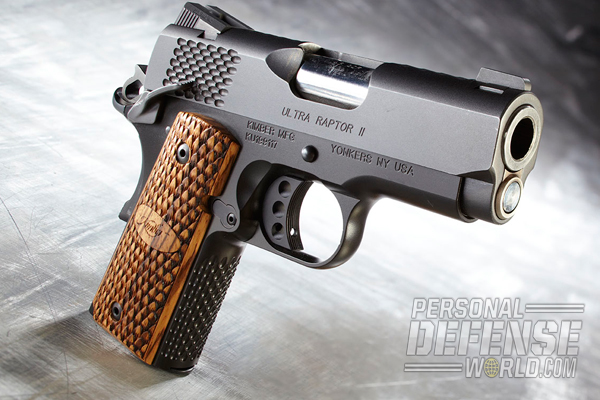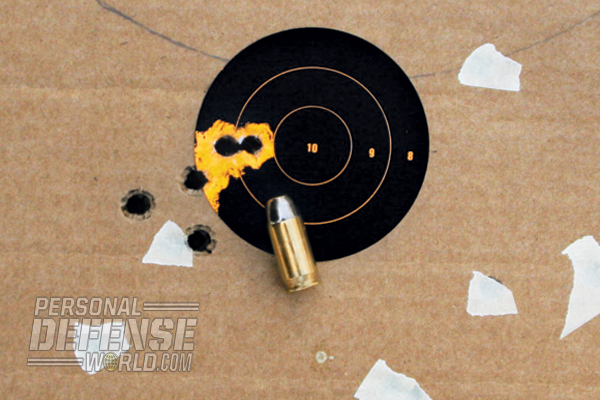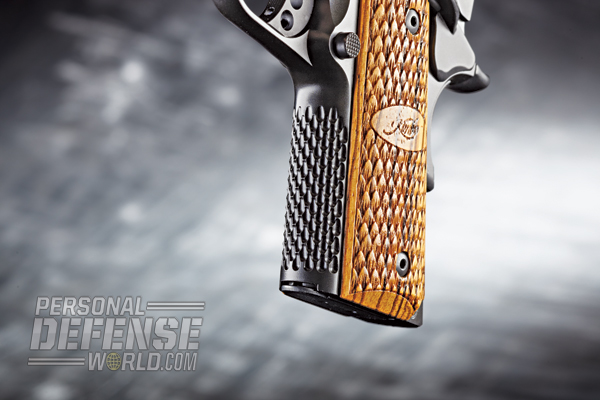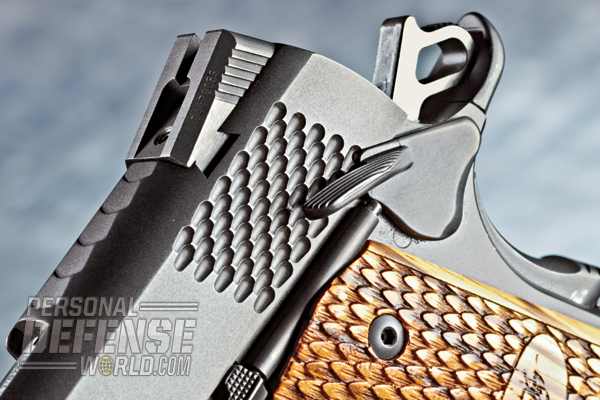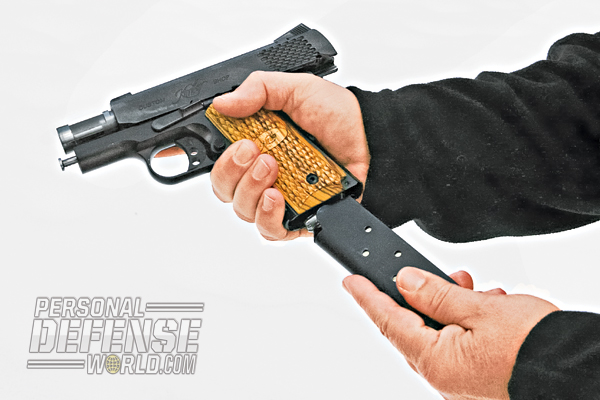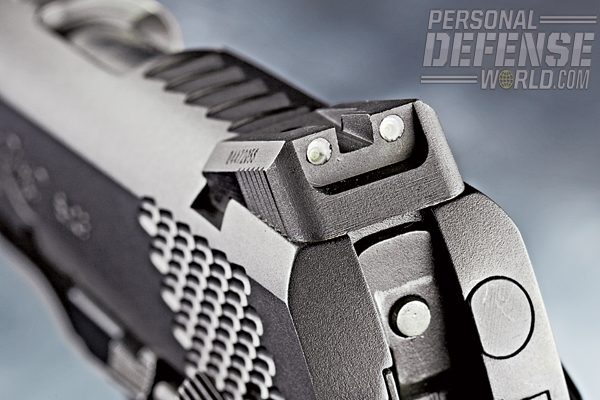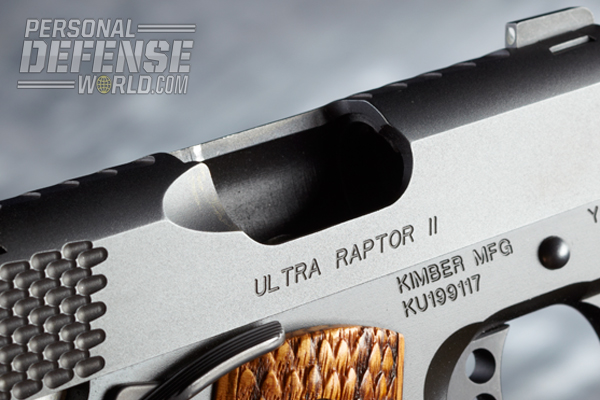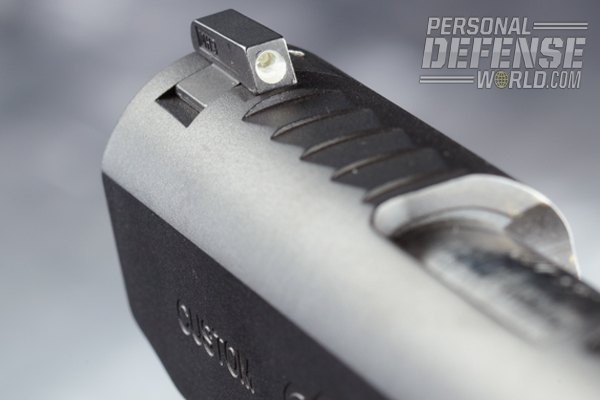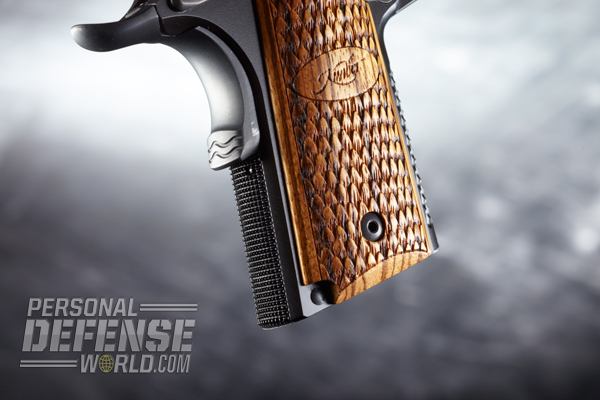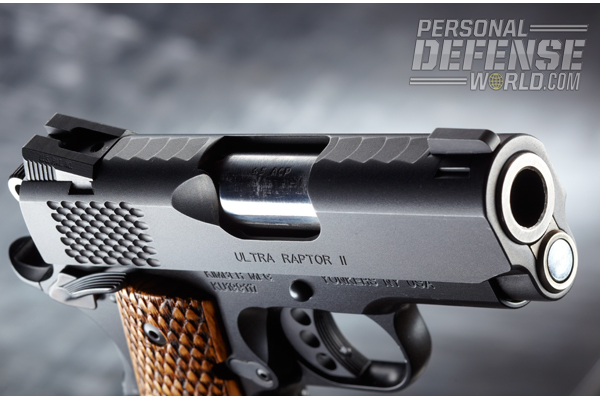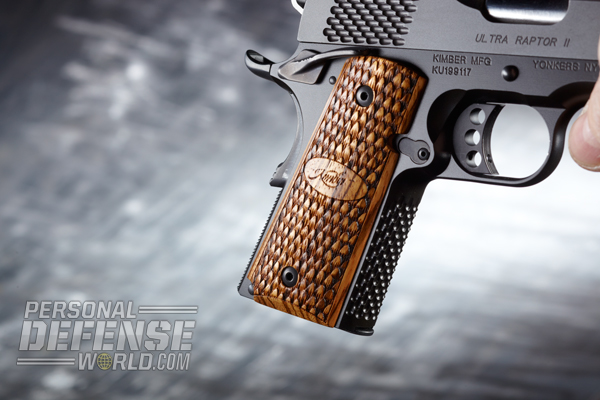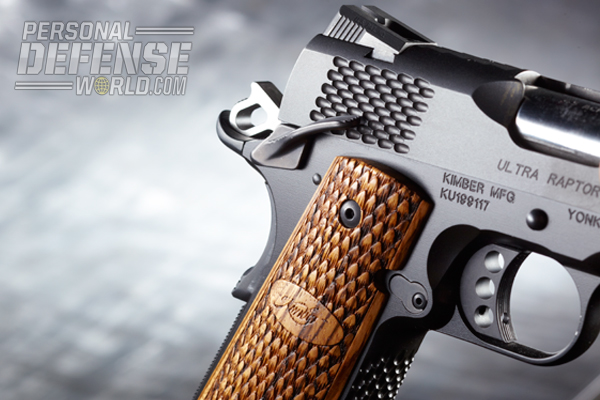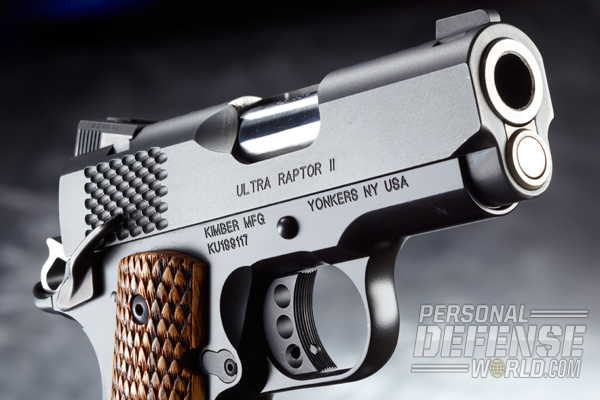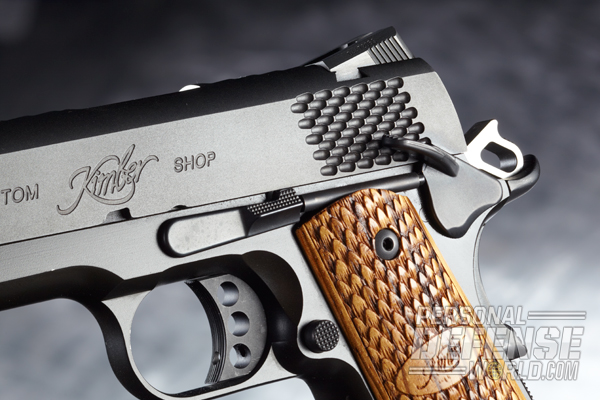Some would call it an omen, others irony. I heard the hoarse, rasping scream of a red-tail hawk from above as I packed the truck for range testing. It screeched again, circling over the trees. “Yes, your point is taken,” I responded. “Thanks for the advice.” I always hold judgment until the brass has cooled and the data read, but I had already started to form an opinion on the Kimber Ultra Raptor II.
The Ultra Raptor II uses Kimber’s compact Ultra 1911 platform that is built with a 3-inch barrel and shorter grip receiver. The Raptor comes out of Kimber’s Custom Shop. The striking metal work is what first catches the eye with the Raptor.
It features aggressively textured metal surfaces with looks that can kill. Though the Kimber Custom Shop has given the Raptor line of pistols a distinctly avian appearance, this compact pistol is not just good looking. When needed, the claws (or should I say talons) come out. The lightweight Ultra Raptor II can be called in swiftly, and with .45 ACP force!
Advertisement — Continue Reading Below
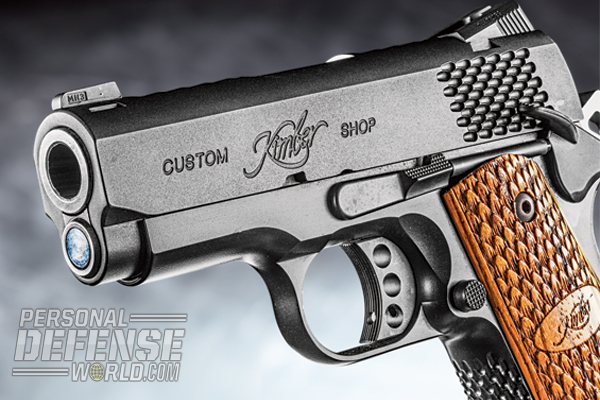
Gun Details
The frame of this compact 1911 is aluminum. It is light in the hand and easy on the hip when carrying. The grip frontstrap is textured in a scale pattern that affords a good grip. In hand it does not feel toothy and sharp like checkering. It is comfortable, yet it grips. The flat mainspring housing sports traditional checkering. Together, they work well when gripping and look good. The beavertail grip safety protects the hand from hammer bite without being too large. It did not print when I carried it concealed. The speed bump ensures the grip safety is deactivated with even a less-than-perfect grip. A full-size, ambidextrous thumb safety is featured on the Ultra Raptor II, and it works—with distinct clicks locking the slide and the trigger. With either hand I was able to flick the thumb safety on or off quickly.
The match-grade trigger is made from aluminum and sports three holes. The trigger face is finely grooved. I prefer grooved triggers on 1911s since my finger seems to get better traction, especially when I’m firing for speed. A hole in the front of the trigger face allows a user to adjust the trigger stop. The factory trigger stop suited me, so I did not adjust it. I liked the feel and the trigger pull on the Ultra Raptor II. On average, the pull weight was slightly over 4 pounds. This is a good trigger pull weight for concealed carry when you have had training on the 1911 platform.
Advertisement — Continue Reading Below
The Ultra Raptor II is a Kimber Series II pistol, meaning it is equipped with a firing-pin safety. The grip safety needs to be depressed to disengage the firing pin block, which then allows the pistol to fire. Some other manufacturers, like Colt, use a firing-pin block connected to the trigger.
The zebrawood grips continue the scale theme. They are carved with a scaly pattern that provides smart looks and a good grip. The stocks are held down by hex bolts.
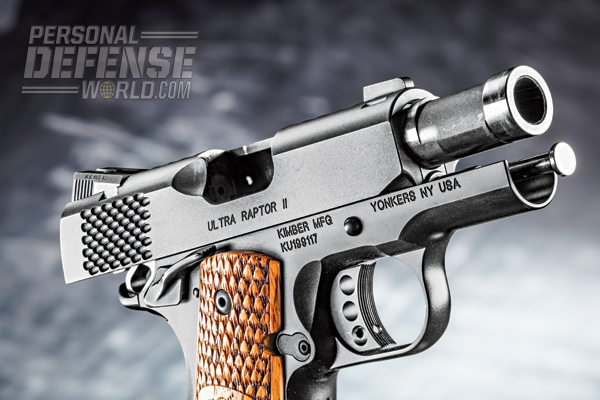
The slide is made from steel. At the rear, the serrations are a scale pattern that offers the same type of grip purchase as grooved or traditional rear slide serrations. Pinch it and pull it back; no extra effort is required. Like all Kimber 1911s, the ejector port is lowered and flared, allowing the Ultra Raptor II to belch out empties with ease. As much as the striking looks of the Ultra Raptor II are pleasing to the eye, they are also functional. The top of the slide is flattened with a back-cut, feathered row of scales running the full length of the slide. This pattern helps dampen any glare along the slide.
Advertisement — Continue Reading Below
The Tactical Wedge night sights are very easy to use. The front sight blade is stout and easily centered in the notch of the rear sight. You can knock the rear sight left or right to adjust windage. My sample gun was dead-on at 15 yards, though compact Ultra II models are not target guns. They are meant for concealment and self-defense. I fired it in dim light, and the three dots of the night sights were easy to distinguish. I also tested the pistol in the bright, noontime sun.
What makes the Ultra II models different than standard 1911s is the Ultra II’s bull barrel. The 3-inch, ramped, match-grade stainless steel bull barrel is fitted to the slide, so there is no need for a barrel bushing to center the barrel when it goes into battery. A tool is required for taking down the Raptor, and I lost the tool immediately after receiving the pistol. A common paperclip, however, can be used as a substitute for the tool.
The slide-to-receiver fit of the Kimber Ultra Raptor II was very tight. Nothing was loose, and nothing wiggled to hinder accuracy. This particular Ultra Raptor II was finished in a matte black, and with the blonde wood grip it is a handsome, well-groomed pistol. With some weapons, looks can be seductive, but then on using it the shooter sometimes discovers that the attraction has worn off fast. To see how the Raptor would work, I went to the range with a Blackhawk CQC holster in my range bag. If the Raptor performed at the range, the next step was day-to-day carry.
Advertisement — Continue Reading Below
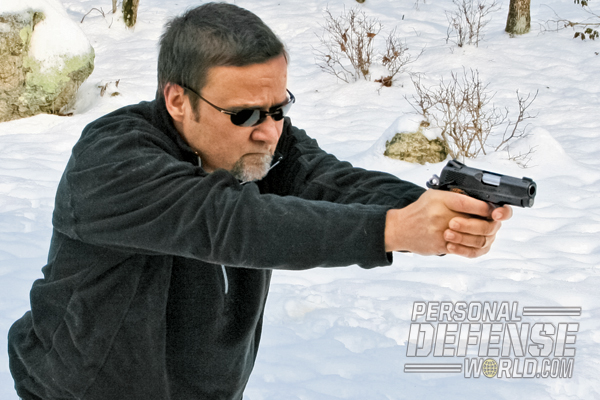
Range Time
Ammunition on hand consisted of the new Winchester Win1911 in 230-grain full metal jacket (FMJ) and jacketed hollow-point (JHP) bullets. This ammo is manufactured for use in 1911 platforms and is offered in two bullet types. The muzzle velocity of both are equal, so a user can go from training—using FMJ—to concealed-carry defense—using JHP—without a change in impact. I also brought Black Hills in 230-grain FMJ bullets. Small 1911s are a handful with ball ammo, and I wasn’t going to baby the Ultra Raptor II; I wanted the full experience.
“I have no doubt that this 1911 can turn the tables for the preyed upon, making him or her a lethal, swift defender…”
Using a rest at 15 yards, I was able to easily keep five-shot groups to 1 inch. If I spent some more time with the Raptor, I’ll bet I could have split playing cards. I was pleased with the accuracy and performance. Out of the box there were no malfunctions; the Raptor tore through the ball ammo. Recoil was very manageable, but don’t think this is a novice’s handgun. The 1911 platform requires training.
Advertisement — Continue Reading Below
For fun, I used an Impact Seal bouncing target and was able to skip the orange block along the ground, hitting it again and again before it stopped moving when the magazine was empty. The bouncing orange block showed the impact from the bullets, but the holes seal up tight, making it a good training device to be used over and over. For tracking, a moving target at close range is very useful because it bounces erratically, helping with sight acquisition and trigger control.
The magazine capacity is seven rounds. From the range, I topped off the magazine plus a round in the chamber. The Ultra Raptor II was light on my hip, and driving/sitting posed no discomfort. With the gun unloaded, I practiced my draw from concealed carry. Not only was the Raptor easy to carry, but drawing from under layers of clothing was smooth. Like most 1911s, it was a natural pointer.
The Ultra Raptor II makes carrying a compact 1911 comforting. In use, this small 1911 was deadly accurate with manageable recoil, even with ball ammo. Yes, I hold a high opinion of the Ultra Raptor II. I have no doubt that this 1911 can turn the tables for the preyed upon, making him or her a lethal, swift defender.
Advertisement — Continue Reading Below
For more information, call 888-243-4522 or visit https://www.kimberamerica.com.
